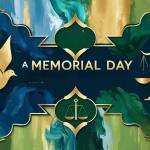There’s an interesting article in Alternet on America’s decidedly ambivalent attitude towards Christmas back when it was a "Christian nation" largely free of all the Jews, Muslims, Hindus, atheists, and other non-Christian subversives who, to the Christian Right’s rage, now expect American institutions to acknowledge their beliefs and sensibilities, as well.
As you read these examples of past animus towards Christmas remember that these are the forefathers (and the continuing inspiration) of much of the contemporary evangelical movement. Ironically, their ancestors were the "cultural elite" of their day looking down on the masses for their "deviant" but (as is often in popular religious life) far more holistic and life-affirming holiday festivities.
The horrified comparisons to, gasp, Catholicism (e.g., "popish") show you how vilified it was in American cultural life until fairly recently. It seems that some early American Christian leaders were very "Wahhabi", doing their best to stamp out out every form of spiritual expression that did not find favor with their arid scripturalism.
AlterNet: Once Upon a Time the Religious Right Demonized Christmas, Even Banning Its Celebration
It’s ironic to hear Religious Right groups portray themselves as the great defenders of Christmas – their spiritual forebears hated the holiday and even banned its celebration.
The Puritans of Massachusetts Bay frowned on Christmas revelry, considering the holiday a Roman Catholic affectation. A law in the colony barred anyone from taking the day off work, feasting or engaging in other celebrations on Christmas, under penalty of a five-shilling fine.
The law was repealed in 1681, but Christmas celebrations remained unpopular in New England and other colonies for many years. That did not change after the Revolution, because many Americans viewed Christmas as a Tory custom, a reminder of the expelled British.
Although Christmas became popular in the South as early as the 1830s, other regions were apathetic. Writer Tom Flynn notes in his 1993 book The Trouble with Christmas that Congress did not begin adjourning on Christmas Day until 1856. Public schools in New England were often open on Dec. 25, as were many factories and offices. Many Protestant churches refused to hold services, considering the holiday "popish."
Not until after the Civil War did Christmas begin to seriously affect American cultural and religious life. European immigration increased sharply after the war, and many of the newcomers came from countries with strong Christmas traditions. Germans, Italians, Poles, Swedes, Norwegians and others brought the holiday and many of its features, including Christmas trees and Santa Claus, to America in a big way.
The celebration spread, and in 1870 Christmas was declared a federal holiday by Congress. But practices in the states continued to vary. As late as 1931, Flynn reports, nine states still called for public schools to remain open on Christmas Day.
Speaking of little known facts about Christmas, did you know that Christmas’ most beloved icon after Santa, Rudolph the Red-Nosed Reindeer, is nothing more than the figment of a department store advertising campaign?
Never liked that critter, though I must confess to still enjoying the charming old stop-motion movies on his adventures.











